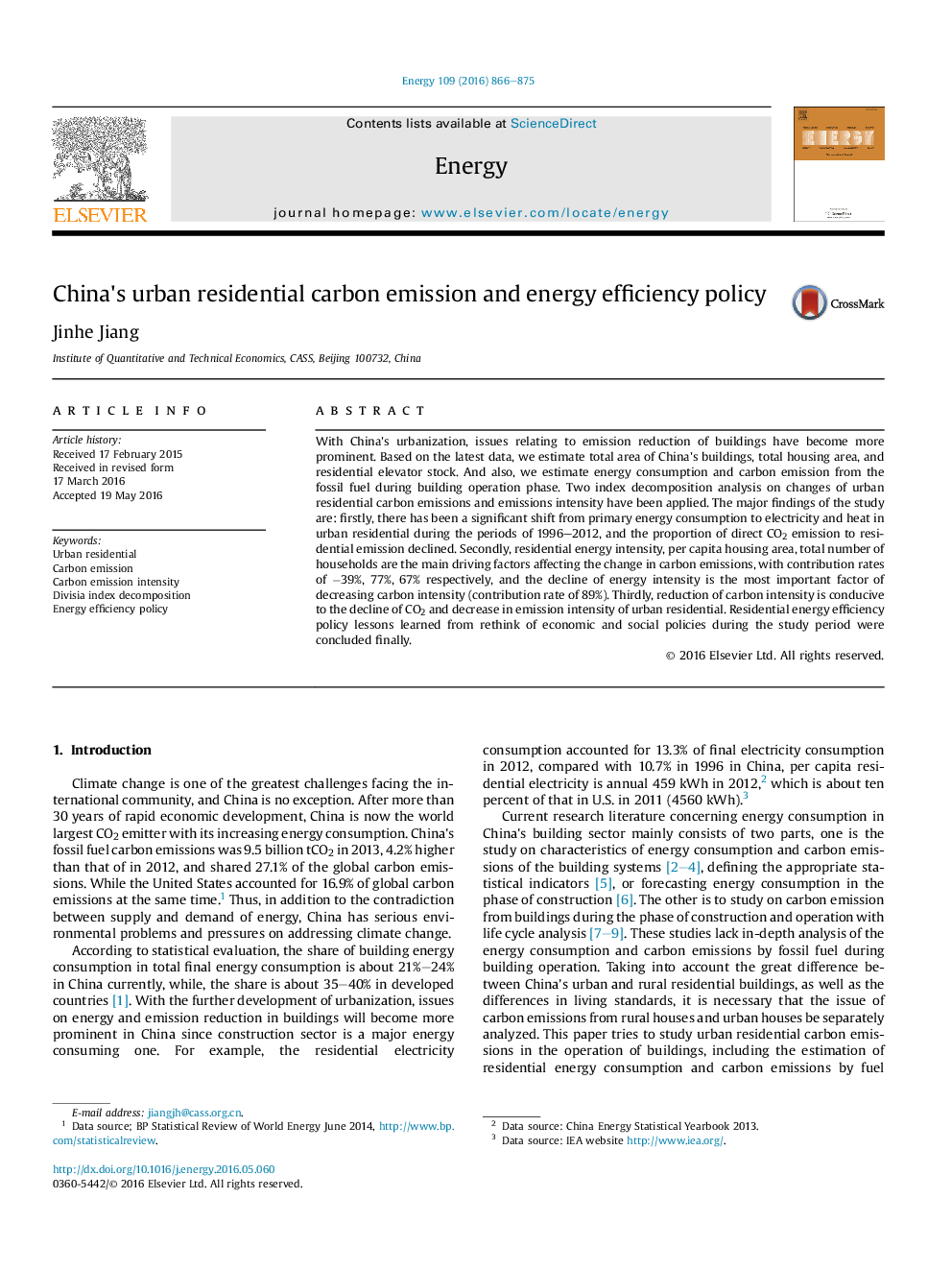| Article ID | Journal | Published Year | Pages | File Type |
|---|---|---|---|---|
| 8073633 | Energy | 2016 | 10 Pages |
Abstract
With China's urbanization, issues relating to emission reduction of buildings have become more prominent. Based on the latest data, we estimate total area of China's buildings, total housing area, and residential elevator stock. And also, we estimate energy consumption and carbon emission from the fossil fuel during building operation phase. Two index decomposition analysis on changes of urban residential carbon emissions and emissions intensity have been applied. The major findings of the study are: firstly, there has been a significant shift from primary energy consumption to electricity and heat in urban residential during the periods of 1996-2012, and the proportion of direct CO2 emission to residential emission declined. Secondly, residential energy intensity, per capita housing area, total number of households are the main driving factors affecting the change in carbon emissions, with contribution rates of â39%, 77%, 67% respectively, and the decline of energy intensity is the most important factor of decreasing carbon intensity (contribution rate of 89%). Thirdly, reduction of carbon intensity is conducive to the decline of CO2 and decrease in emission intensity of urban residential. Residential energy efficiency policy lessons learned from rethink of economic and social policies during the study period were concluded finally.
Related Topics
Physical Sciences and Engineering
Energy
Energy (General)
Authors
Jinhe Jiang,
